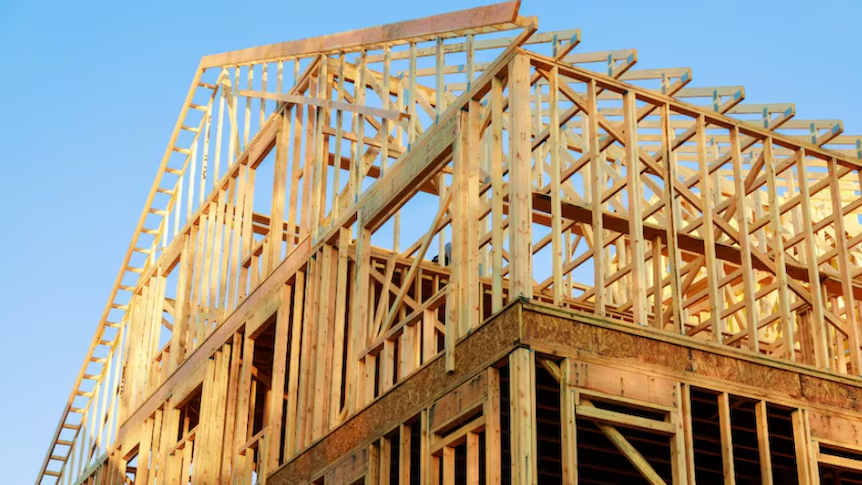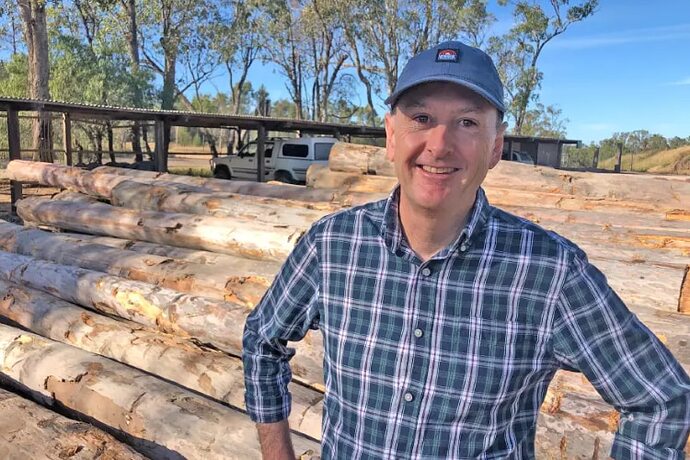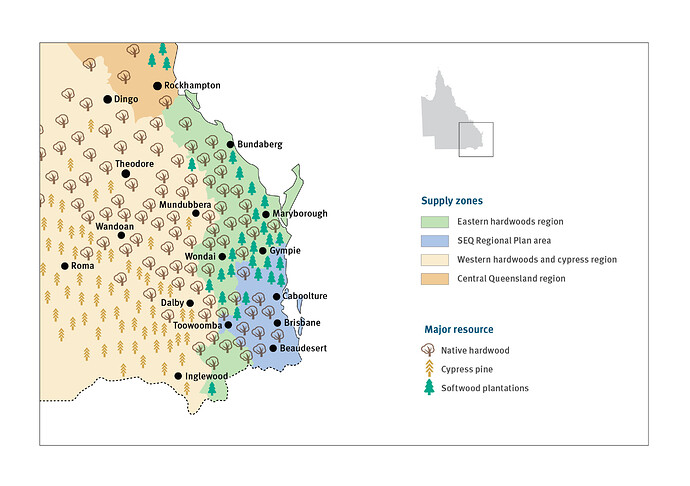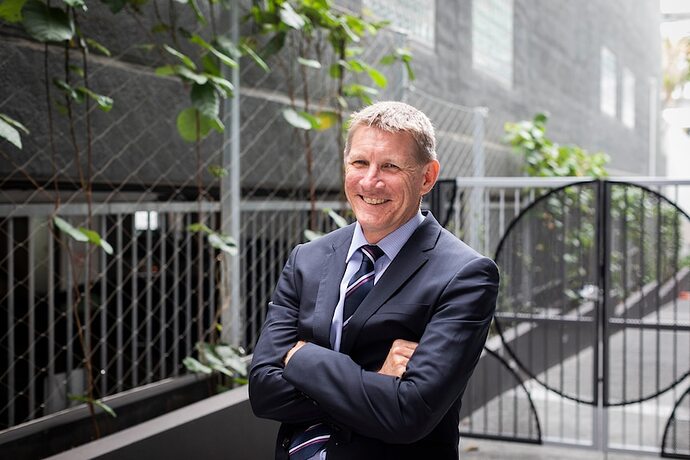People looking to build a new home could face higher costs and longer completion times due to a looming shortage of hardwood timber in Queensland, industry groups say.
Harvesting of native hardwood — used for structural beams and posts, flooring, cladding, and decking — will be banned in state-owned forests in south-east Queensland at the end of 2024 and potentially in other key regions over the coming years.
Timber Queensland CEO Mick Stephens said a lack of certainty from the state government around hardwood supplies would lead to cost and time blowouts.
“If the government cannot provide certainty for the native forest industry, there’s going to be reduced supply, and so the ultimate impact of that is there’s going to be a blowout in the availability of materials and also price rises,” Mr Stephens said.
Timber Queensland CEO Mick Stephens says uncertainty around native logging will impact home builders and workers.(Supplied: Timber Queensland)
In Queensland, hardwood and softwood are mainly harvested from government and privately owned native forests, as well as from commercial plantations.
The state has the largest proportion of Australia’s total forest area at 39 per cent, making it a major source of hardwood.
However, the ban in state-owned forests in South-East Queensland will take about 60,000 hectares out of the supply chain, according to Mr Stephens.
Logging will be banned in the SEQ regional plan area from December, but will continue in the eastern and western hardwoods regions until 2026 and 2034 respectively. (Supplied: Queensland Department of Agriculture and Fisheries)
To provide some confidence for the industry, the state committed to a Native Timber Action Plan in 2019, saying it would allow logging to continue in its “eastern hardwoods” region until at least 2026 and in the “western hardwoods” region until at least 2034.
Then-Agricultural Industry Development and Fisheries Minister Mark Furner said that the economics of timber industries around the world was changing and Australia and Queensland were not immune to that.
“This plan for the industry is honest, achievable, and realistic,” he said at the time.
"It will work with communities reliant on the industry to take the necessary steps needed to plan for their future.
“Sustainably managed timber is increasingly being recognised globally as the ultimate renewable and a key plank of the world’s response to climate change, carbon capture, and carbon sequestration.”
Mr Stephens said little progress had been made since then.
“It’s now 2024 and we have no action other than one line in the budget papers to implement the plan with no funding commitments,” he said.
"Here we are in the middle of a housing crisis — Queensland’s population growth is bursting at the seams.
“We’re going to need timber materials and native hardwood is already out there.”
The Queensland government has been contacted for comment.
Shadow Forestry Minister Tony Perrett said the LNP would deliver a Queensland timber action plan that would secure the sustainable timber supplies needed to build homes.
“It will provide certainty and support to industry for investment and provide confidence to be able to deliver,” he said.
The big build
The state government has set a target of delivering one million new homes by 2046, or 45,000 each year.
Housing Industry Association Queensland executive director Michael Roberts.(Supplied: Housing Industry Association)
Housing Industry Association Queensland executive director Michael Roberts said the target was not achievable without these materials.
“We can’t do that if we don’t have a reliable source of timber — it simply won’t happen,” Mr Roberts said.
"One of the things we learned during the COVID period was how important locally produced materials are to ensure that the home-building industry can continue to operate in an efficient manner.
“A shortage of any material inevitably results in an increase in price and, of course, that gets passed on to the end consumer.”
What are the alternatives?
In 1999, the government launched a hardwood plantation program to provide an alternative timber resource for the native hardwood industry.
An independent review showed that many of the hardwood plantations established so far were performing poorly and the program was ended in 2019.
While sourcing hardwood overseas to make up the shortfall is another option, industry groups say this could increase costs and the risks of using unsustainable timber.
“Being so far away means we’re totally reliant on the supply and price that’s being set by overseas markets,” Mr Roberts said.
An estimated 10 per cent of Australia’s timber imports are suspected as being derived from illegally logged sources.
Mr Stephens said using other materials like steel had a far higher carbon footprint than timber.
Queensland Conservation Council protected areas campaigner Nicky Moffat said the timber industry had plenty of time to transition out of native logging and a new hardwood plantation program should be investigated.
Ms Moffat said the council welcomed an end to native logging due to the harm it could cause to wildlife.
Native logging was banned by Labor governments in Victoria and Western Australia this year, while uncertainty remains in Queensland and NSW.



